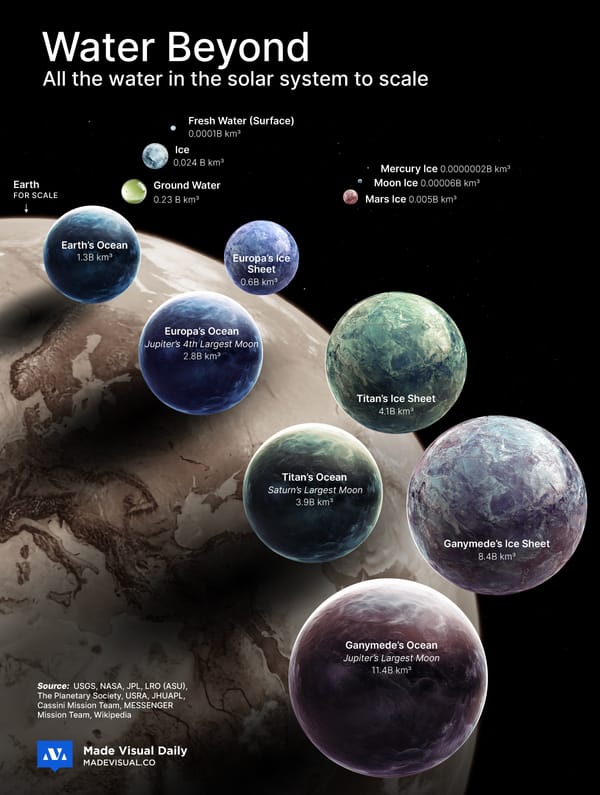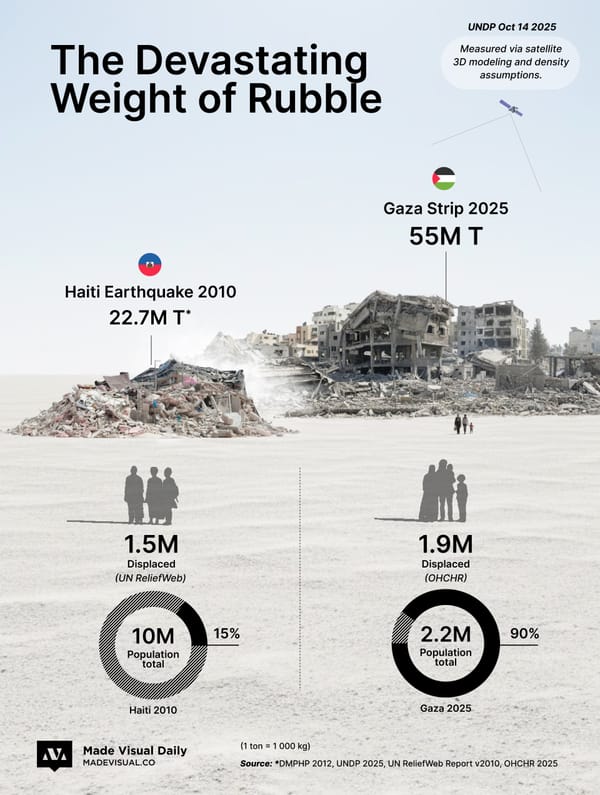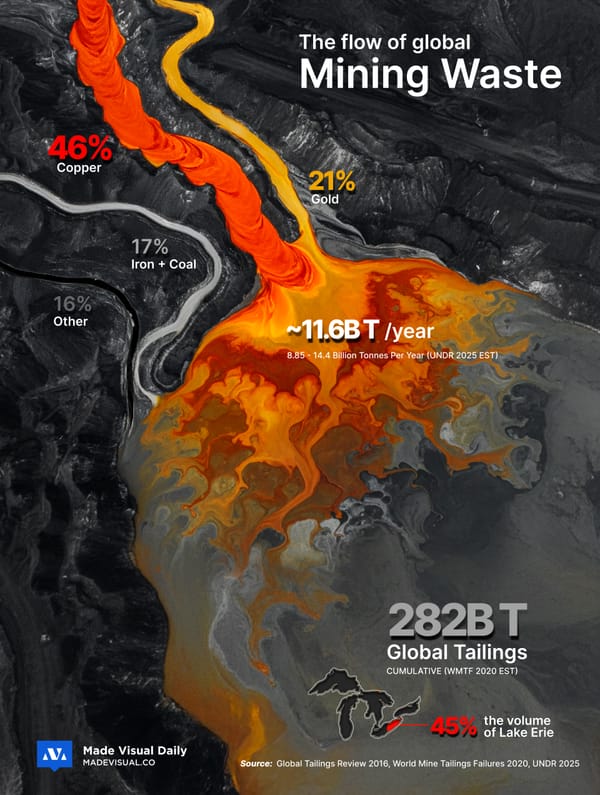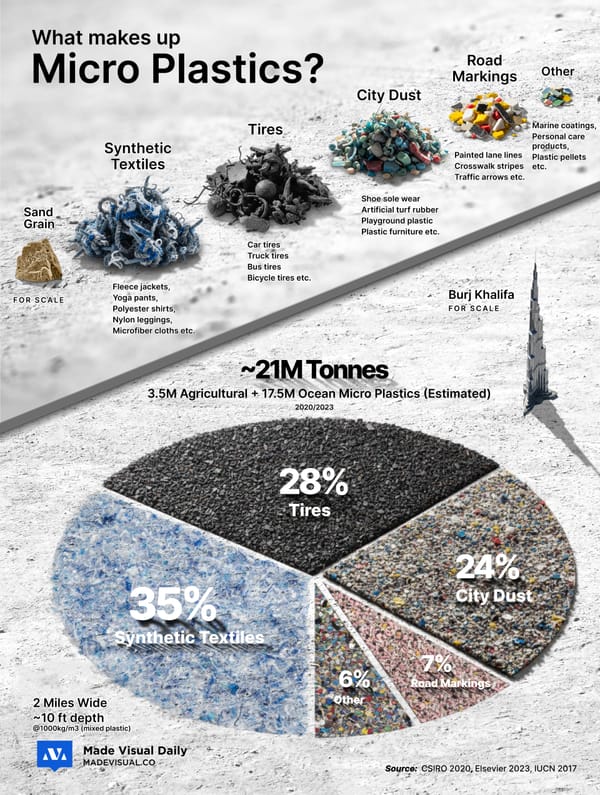Who Owns Helium
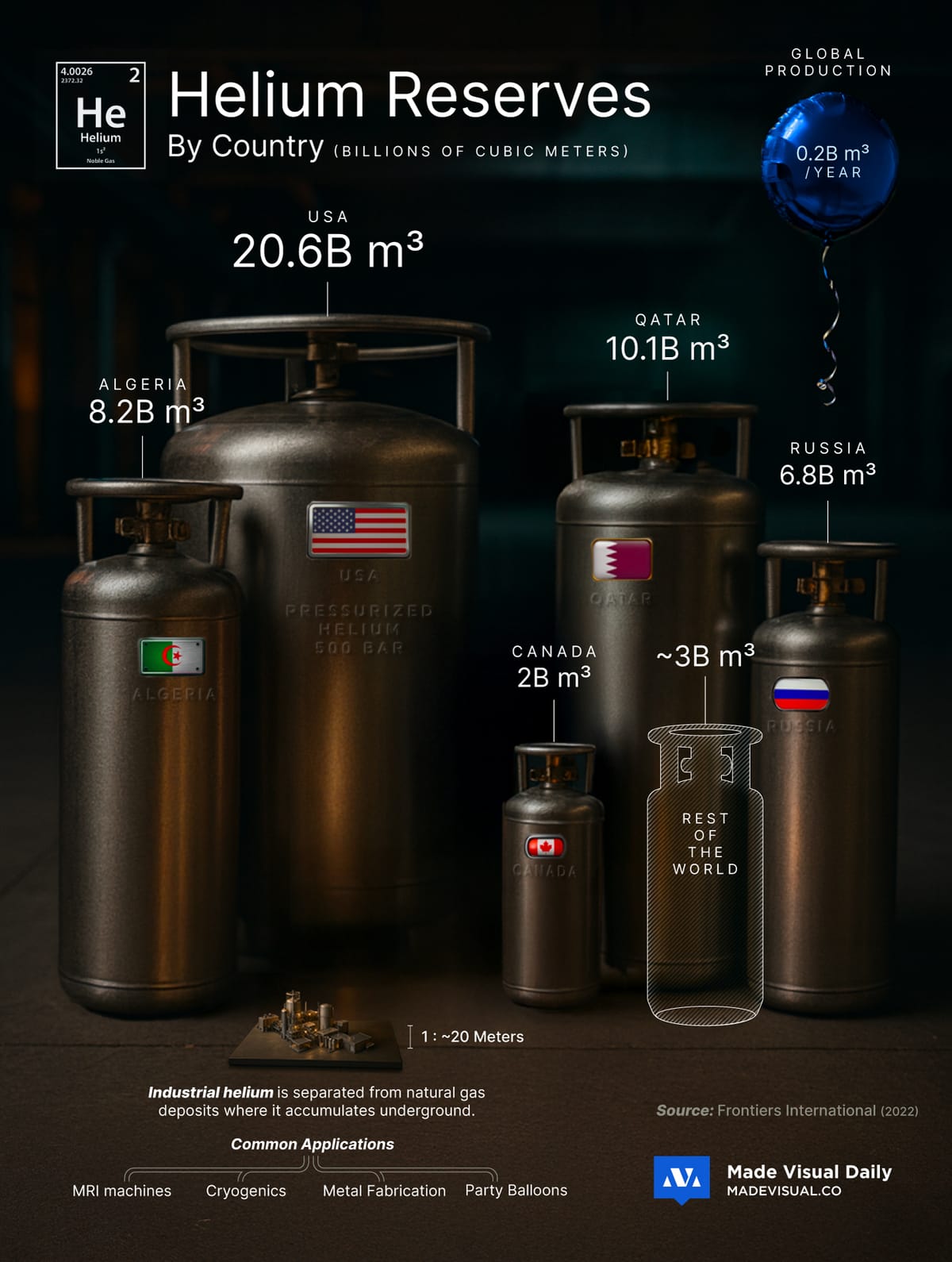
A handful of nations control nearly all of Earth’s helium—an irreplaceable gas underpinning quantum computing, chipmaking, and medical imaging—turning what once floated balloons into a quiet strategic choke point.
Takeaways
- The sheer imbalance in reserves reveals how helium supply risk is structural—not cyclical—since extraction depends entirely on specific natural gas fields, not new exploration.
- Even at current production rates, global reserves equate to only a few decades of consumption, implying that pricing and access will hinge more on geopolitics than geology.
Data
The data, drawn from USGS and Frontiers analyses, combines proven and probable helium resources by country—visualized as proportional volumes to emphasize dominance and dependency—though figures remain estimates, constrained by opaque reporting and variable recovery rates tied to natural gas production.
5 Related Facts
💨 Helium isn’t renewable — it escapes Earth’s atmosphere once released, making every cubic meter effectively non-recyclable.
🧊 Over 30% of global helium is consumed by cryogenics, primarily to cool superconducting magnets in MRI machines and quantum systems.
🌍 The U.S. Federal Helium Reserve, once the world’s main buffer, has been selling off assets and winding down operations, amplifying supply volatility.
⚙️ Helium is produced only as a byproduct of natural gas extraction, so shifts toward renewable energy indirectly tighten supply.
🧪 No synthetic or industrial alternative exists that replicates helium’s combination of inertness, lightness, and ultra-low boiling point — its scarcity is absolute, not relative.


